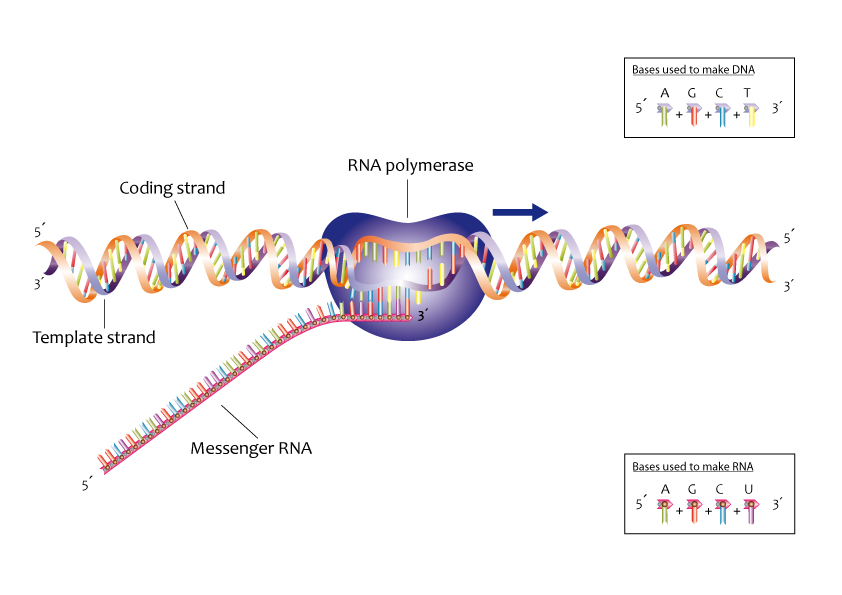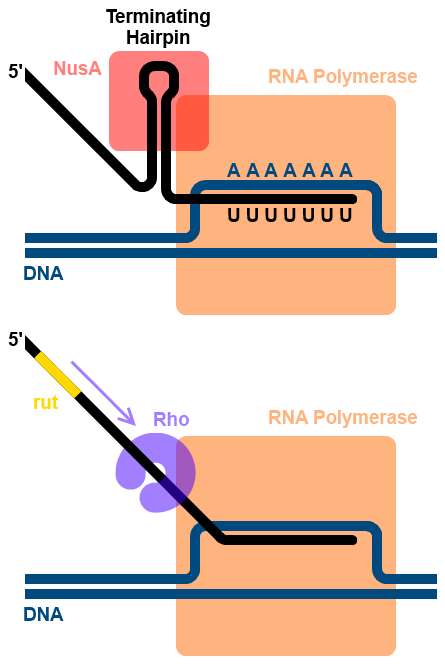Main Body
Prokaryotic Transcription – Elongation & Termination
Prokaryotic Transcription - Elongation & termination
Dr.V.Malathi
Elongation
Once transcription is initiated, the DNA double helix unwinds and RNA polymerase reads the template strand. Elongation phase begins with the release of the σ subunit from the polymerase. The dissociation of σ allows the core enzyme to proceed along the DNA template, synthesizing mRNA in the 5′ to 3′ direction .
Nucleotides are added to the 3′ end of the growing chain . At a temperature of 370 C new nucleotides are added at an estimated rate of about 42-54 nucleotides per second in bacteria. As elongation proceeds, the DNA is continuously unwound ahead of the core enzyme and rewound behind it. The base pairing between DNA and RNA is not stable enough to maintain the stability of the mRNA synthesis components. Instead, the RNA polymerase acts as a stable linker between the DNA template and the nascent RNA strands to ensure that elongation is not interrupted prematurely.

“Process of transcription “ by NHS National Genetics and Genomics Education Centre. is licensed under CC BY 2.0
Termination
Once a gene is transcribed, the prokaryotic polymerase needs to be instructed to dissociate from the DNA template and liberate the newly made mRNA. Depending on the gene being transcribed, there are two kinds of termination signals namely :
- Rho-dependent or Extrinsic termination : Termination is controlled by the rho protein.The rho protein tracks along behind the polymerase on the growing mRNA chain. Near the end of the gene, the polymerase encounters a run of G nucleotides on the DNA template and it stalls. As a result, the rho protein collides with the polymerase. Rho unwinds the DNA-RNA hybrid formed during transcription and releases the mRNA from the transcription bubble.
- Rho-independent or Intrinsic termination is controlled by C–G nucleotide sequences in the DNA template strand at the end of the gene being transcribed. Due to the self complementary nature of the C-G nucleotides . The mRNA folds back on itself, and form a stable hairpin . This causes the polymerase to stall and it begins to transcribe a region rich in A–T nucleotides. The complementary U–A region of the mRNA transcript forms only a weak interaction with the template DNA. This fact together with the stalled polymerase, induces enough instability for the core enzyme to break away and liberate the new mRNA transcript.
Upon termination, the process of transcription is complete. By the transcription would end the prokaryotic transcript would have already commenced the synthesis of numerous copies of the encoded protein .

“Prokaryotic Terminators “ by Oalnafo via Wikimedia Commons is licensed under CC BY-SA 3.0

